
Books and e-Books,
In the displays below you will find books, e-books and reports in the field of arts and cultural management that you can find in the NHL Stenden library. The e-books are available in the Ebsco E-books database and can be read online. It is often possible to download or print a number of pages. By clicking in the display on the cover of an ebook or report you will be redirected to the online publication.
Find books:
Use the NHL Stenden Library Catalog to find these books in the library. Do you want to know how to find other books and interesting publications? Then use the Toolbox Information skills.
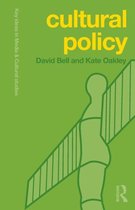
This book explores cultural policy in cities, nations and internationally.

Dutch academics in cultural policy research have compiled a volume to commemorate the quarter century in which Dutch cultural policy has developed and analyse the key debates in Dutch cultural policy for the coming years.
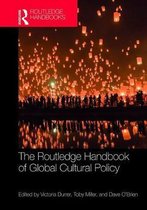
Explores how cultural policy has become a global phenomenon. The book address cultural policy's relation to core academic disciplines and core questions, of regulations, rights, development, practice, and global issues. With a cross-section of country-by-country case studies.
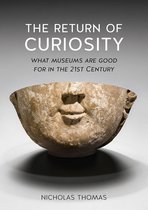
This book explores museums in the modern age, offering a fresh perspective on some of our most important cultural institutions and the vital function they serve as stewards of human and natural history

This book addresses how museums forge two-way communication and engaged participation through the use of community curation, social media, collaboration, and inquiry-based learning.

This book appraises strategies museums employ to raise funds including admission prices, membership categories, donor and affinity groups, and specialized event-driven efforts while examining new crowdfunding models such as Kickstarter, Indiegogo, and Piggybackr.
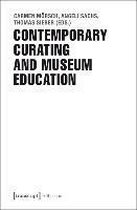
Museum education has evolved as a practice in its own right, questioning, expanding and transforming exhibitions and institutions. How does museum work change if we conceive of curating and education as an integrated practice? This question is addressed by international contributors from different types of museums.

This book paints a thorough picture of why people go to museums, what they do there, how they learn, and what museum practitioners can do to enhance these experiences. Updated icorporating advances in research, theory, and practice in the museum field over the last twenty years.

This book explores―at the macro, meso and micro levels and in terms of qualitative as well as quantitative studies―the current and future role of museums for art and society.

An ambitious study of what it means to be a museum in the twenty-first century investigates how museums are blurring the boundaries between their gallery walls and public spaces. He examines how artists are challenging and changing museums, taking readers deep into new experiments in exhibition making. Along the way, the author offers insights about how museums currently exemplify the fusion of the creative and digital economies.

This book examines a fundamental shift in institutional behavior in museums located in the United States and the United Kingdom. Contending that art museums have moved toward a new paradigm of public engagement, it posits that modern museum visitors are treated as self-directed "clients", with the agency to make meaning for themselves. The book then considers how this change has come about, examining factors such as the onset of a new museology, an experience economy, and a marketing revolution.
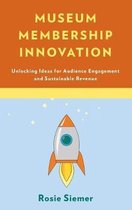
Rich with examples of innovative membership programs and discussion with museum and nonprofit leaders, this timely book provides practical advice on how to improve all aspects of the membership program through the process of continuous innovation.

Museums are increasingly developing international strategies to raise their profiles outside of their home markets. How can we define this trend? This book is based on a multiple correspondence analysis of a database populated by the results of a survey conducted by the author on international museums. The study reveals that museums fall into four categories regarding their internationalization strategies and can have two complementary international strategies: one geared toward economic profitability and one geared toward the preservation of heritage.

Understanding revenue sources is vital for ensuring the long-term stability and sustainability of museums, historic sites, zoos, and botanic gardens. Sustainable Revenue for Museums delves into the strategies and tactics that museum professionals, funders, and experts use to generate and manage their revenue.

In Museum Branding, Wallace offers clear, practical advice on how to brand a museum department by department, step by step. By highlighting case studies from museums of every type and size, she emphasizes that brains, not budget, create a successful branding effort. This new edition is heavily updated to reflect digital branding from start-to-finish.
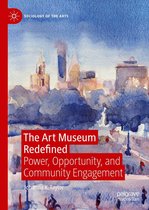
This book presents a critical analysis of the power and opportunity created in the implementation of community engaged practices within art museums, by looking at the networks connecting art museums to community organizations, artists and residents
This text shows how to create and execute successful marketing plans for creative businesses.

Marketing in Creative Industries addresses the specific challenges of marketing in the creative industries, whilst applying marketing theory to a wide range of international examples

This book builds a comprehensive understanding of what arts management can mean in an international context, the four parts focus on, history and evolution, dynamics of entrepreneurship, cultural policy, and functional activities as marketing, planning, increasing diversity, hiring, fundraising, and sustainability.
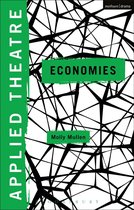
Thi book addresses a notoriously problematic area: applied theatre's relationship to the economy and the ways in which socially committed theatre makers fund, finance or otherwise resource their work.

This book includes a critical review of how the new cultural economy is reshaping urban labour, housing and property markets, contributing to gentrification and to ‘precarious employment' formation, as well as to b community regeneration and urban vitality.

This book addresses all the key issues related to marketing strategy and planning for the cultural industries.

This book explains and critically examines how arts managers from more than 40 countries across the world respond to globalisation, digitalisation and migration and analyses the manner in which cultural institutions become more international in nature

This book analyses markets for art and cultural goods, highlights facets of art auctions and discusses cultural policies, the role of the state in financing culture and determinants of the economic success of artists, It also sheds new light on cultural areas, such as the performing and visual arts, festivals, films, museums and cultural heritage.
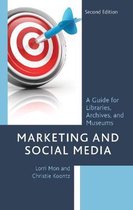
Both an introductory textbook and a guide for working professionals who want to go beyond mere promotion to developing and deliberately managing a comprehensive marketing campaign.

This book proposes a revised managerial vision of the key processes that constitute every arts and cultural organization. Each chapter offers an innovative analysis of a classic managerial problem, describing popular mistakes and providing case-based insights derived from real world important examples.

The intention of the book is to introduce the reader to the various topics and to testify to the strength of economics in explaining the economic aspects of the world of the arts and creative industries. covers a wide range of topics and they are reflected in the many short and accessibly written chapters. Each chapter is written by a specialist in the subject and offers suggestions for further reading.

Is art for everybody? Why do art lovers attach so much value to authenticity, autonomy and authorship? Why did the arts become so serious in the first place? Why do many artists reject commerce and cultural entrepreneurship? Crucially, are any of the answers to these questions currently changing? Hans Abbing is uniquely placed to answer such questions, and, drawing on his experiences as an economist and sociologist as well as a professional artist, in this volume he addresses them head on.

Accessible and comprehensive this book is an essential reference book for students in the areas of art business, arts management, the creative and cultural industries, art history, and general business and management. The key topics covered range from larger-scale questions about the globalisation, funding, and ethics of the art market, to entries more focussed on art objects themselves, such as connoisseurship, authenticity and conservation. Providing an up-to-date entree to the processes, structures, trends and peculiarities of the global art business,

The book covers the full range of the art world from contemporary galleries, secondary market, auction houses, art fairs, and museums. Topics include overviews of the distinct sectors of the business, but also delves in to technical topics: curatorship, antiques, cultural heritage compliance, marketing, art criticism, taxation, customs, insurance, transportation, appraising, conservation, and connoisseurship. Each chapter concludes with a real-world case study to provide cautionary tales of the dangers and pitfalls of the art business.

Museum education has evolved as a practice in its own right, questioning, expanding and transforming exhibitions and institutions. How does museum work change if we conceive of curating and education as an integrated practice?

Museums are public resources that can offer rich extensions to classroom educational experiences from tours through botanical gardens to searching for family records in the archives of a local historical society. With clarity and a touch of humor, Quinn presents ideas and examples of ways that teachers can use museums to support student exploration while also teaching for social justice. Topics include disability and welcoming all bodies, celebrating queer people's lives and histories, settler colonialism and decolonization, fair workplaces, Indigenous knowledge, and much more.

All over the world museum educators are actively engaged in their profession and in applying didactic methods or techniques. The majority of people have heard of guided tours and scavenger hunts, but there are so many more! As an (emerging) educator in museums or other heritage institutions, it’s useful to have a toolkit filled with a wide range of methods and good practices that you can draw upon when you need them. This booklet describes 18 working methods in a fairly random order.

This book appraises strategies museums employ to raise funds including admission prices, membership categories, donor and affinity groups, and specialized event-driven efforts while examining new crowdfunding models such as Kickstarter, Indiegogo, and Piggybackr
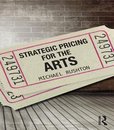
Arts managers, whether working in the performing arts, museums or festivals, and whether in the commercial, non-profit, or state sector, need to make informed decisions on the prices they set. This accessible text provides the first concise, practical, non-technical guide for setting prices in the arts industry. Offering a practical introduction to pricing

'Cover Up the Dirty Parts!' takes on directly the questions regarding not only the relationship between government funding for the arts and political censorship, but also the deeper philosophical questions regarding liberty, the definition of art, the role of vague terms in language and law, and the epistemological role of both free expression and art itself.

This study examines to what extent crowdfunding is being used in the cultural and creative sectors (CCS) in Europe. The study also touches upon the development of partnerships between crowdfunding platforms and public and/or private funders, matchfunding schemes and other types of services. Based on the analysis, the study puts forward recommendations to policy makers on what is needed for crowdfunding to further develop as a multi-purpose tool for CCS practices.

Participation in the arts is analyzed as a contributory factor to European citizenship, and tool for improving individual and societal wellbeing through educational and inclusive policies. Overview of research on the measurement and analysis of, and prospects for, traditional and new forms of cultural engagement in Europe.

This book explores the concept of audience engagement from a number of complementary perspectives, including cultural value, arts marketing, co-creation and digital engagement.

For decades roughly 80 percent of commercial Broadway productions have failed to recoup their original investments. In light of this shocking and harsh reality, how does the show go on? Tim Donahue and Jim Patterson answer this question and many others in this updated edition of their popular, straightforward guide to understanding professional theater finances and the economic realities of theater production.

What is the secret DNA of theater? What makes it unique from its sister arts? Why was it invented? Why does it persist? And now, in such an advanced technological age, why do we still feel compelled to return to a mode of expression that was invented over two thousand years ago?

Theatre: Its Art and Craft is an introductory theatre text that focuses on the practitioners and their processes.It helps readers understand how theatre happens by explaining who makes it happen and what they do.

This book offers an insight into theatre-making that takes place in communities across the world. It considers the role of artists who work in challenging settings, including prisons, schools, hostels for the homeless, care homes for the elderly and on the street.

The term Live Art has been used to describe a diverse but interrelated array of performance practices and approaches. This volume offers a contextual and critical introduction to the scene of contemporary Live Art in Britain. Focusing on key artists whose prolific body of work has been vital to the development of contemporary practice, this collection studies the landscape of Live Art in the UK today and illuminates its origins, as well as particular concerns and aesthetics.

The author reveals the best practices that consistently lead to successful theater operations. Culled from surveys and interviews with theater managers and experts in crucial functional areas, this guide provides important tips for all people who work or want to work in regional, campus, and community-based theaters.

Theatre Institutions in Crisis examines how theatre in Europe is beset by a crisis on an institutional level and the pressing need for robust research into the complex configuration of factors at work that are leading to significant shifts in the way theatre is understood, organised, delivered, and received.

This volume frames the concept of a national play. By analysing a number of European case studies, it addresses the following question: Which play could be regarded as a country's national play, and how does it represent its national identity? The chapters provide an in-depth look at plays in eight different countries: Germany (Die Räuber, Friedrich Schiller), Switzerland (Wilhelm Tell, Friedrich Schiller), Hungary (Bánk Bán, Jozsef Katona), Sweden (Gustav Vasa, August Strindberg), Norway (Peer Gynt, Henrik Ibsen), the Netherlands (The Good Hope, Herman Heijermans), France (Tartuffe, Molière), and Ireland.

Cultural Entrepreneurship focuses on how individuals articulate their experience of entrepreneurship in the cultural and creative industries.

This book examines the ways in which cultural and creative industries can drive entrepreneurship, innovation, sustainability and overall regional development.

Explores various dimensions that artists embody, i.e., aesthetic, critical, messianic, and economic ones, and screens the multiple challenges faced by the artist–enterprises in terms of pricing, funding, and networking.

Relying on real-world cases and examples, this book shows how to conceive, assess, and act on every part of the strategic plan, from the mission statement to the financial statement; from managing the board to marketing.
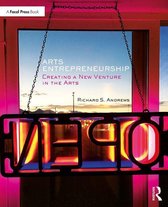
Arts Entrepreneurship: Creating a New Venture in the Arts provides the essential tools, techniques, and concepts needed to invent, launch, and sustain a business in the creative sector

By taking you on the Entrepreneurship route in 8 steps, Culture+Entrepreneurship helps you find your direction in your work. In this guide we support you in articulating your artistic goals and how to communicate them to the public. With lots of inspiration, tips and stories from artists, an actor, a musician, an architect and a documentary maker. These are all eye-openers that show you how your artistic qualities can be used really well in your development as an entrepreneur.

The authors walk readers through the legal intricacies of selling arts and crafts. This helpful guide provides clear explanations and examples of real cases to furnish readers with a strong understanding of their obligations and vulnerabilities. Updated to reflect recent changes in the market and technology, this new edition is the go-to guide for all aspects of running a gallery.

This book elucidates and maps the societal impact of experience and heritage, participation, and entrepreneurship in the cultural sector. The first key focus is the participation of people in various contexts, initiatives, and projects. a second focus is the entrepreneurial efforts and ideas that originate within arts and culture. A variety of topics are explored within the thematic areas of cultural heritage, managerial practices, participation, and cultural entrepreneurship, as well as their inter-relations. Ultimately the aim is to provide the reader with a better understanding of the sometimes conflicting, sometimes mutually fertilizing areas of the arts, culture, business, management, and innovation.